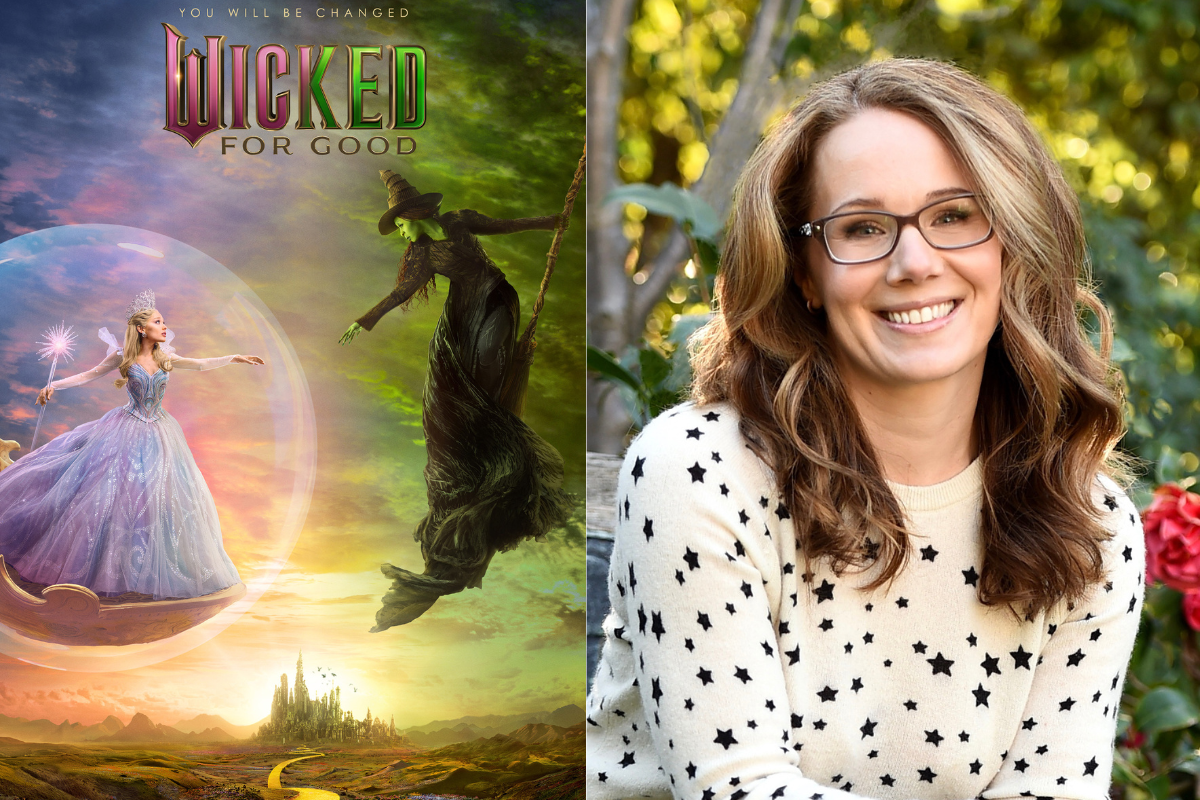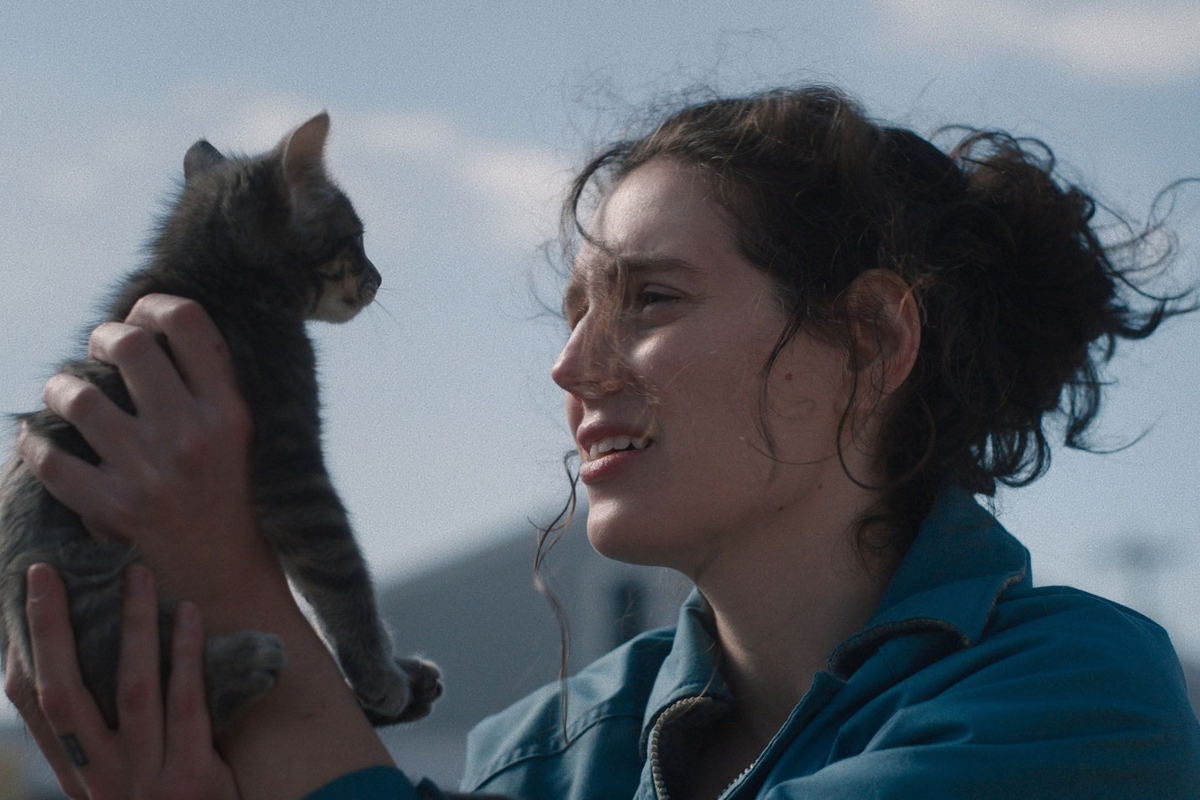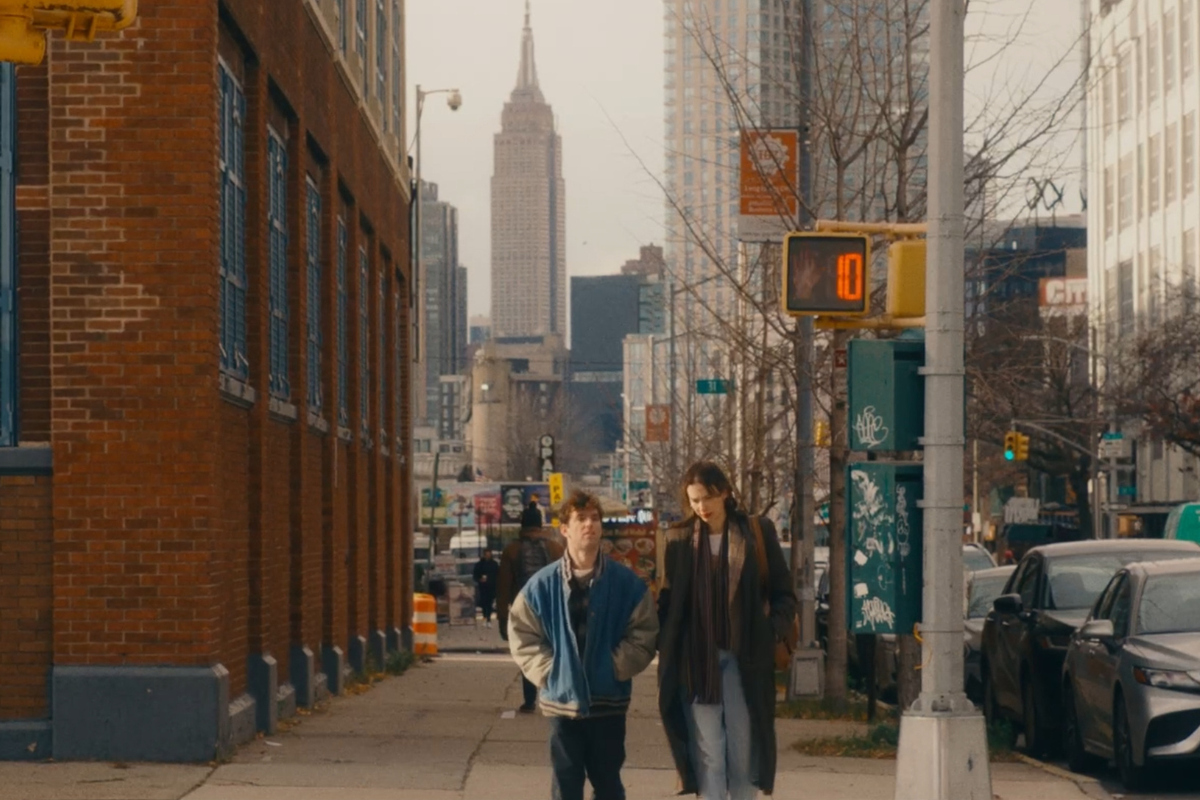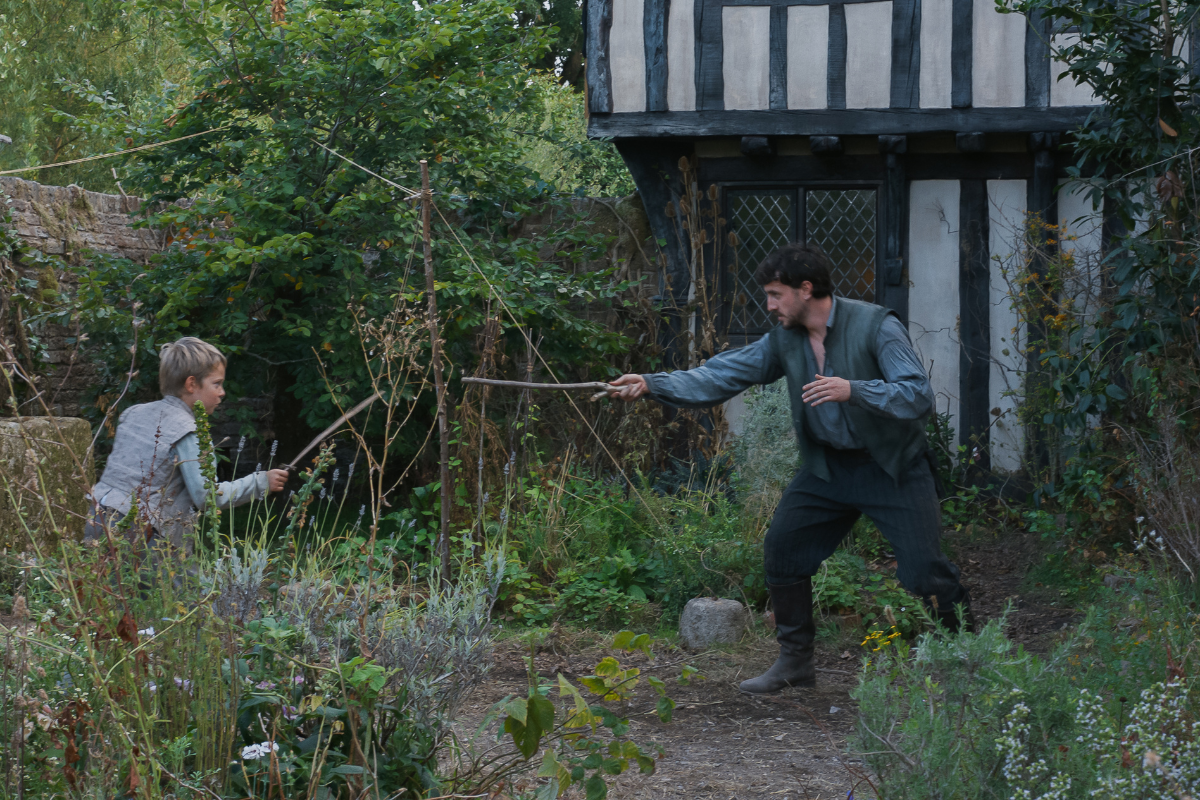Tony Gilroy On Crafting the Opening of Andor’s Second Season
Bryan Young sits down for a chat with “Andor” showrunner Tony Gilroy to discuss season two’s tone, structure, and more.
"Andor” has been the critical darling hit of the television shows on Disney+ and though it’s a team effort, showrunner and writer Tony Gilroy deserves a lion’s share of it. His vision and unique voice has brought a political edge and prestige-style writing to a galaxy far, far away. Set in the years leading up to Rogue One: A Star Wars Story, “Andor” tells the story of Cassian Andor (played by Diego Luna, who also serves as a producer on the show.) Season one offered a window into a full year of his life as he set down on the path of rebel spy, and season two offers us four interconnected three-episode arcs, each documenting a slice of a year barreling toward the explosive events of Rogue One. This new season holds a remarkable urgency to it and remains potent in its writing, offering constant lessons to writers looking for ways to tell stories more efficiently and with an edge. Gilroy is a writer worth studying and he was gracious enough to offer his wisdom to readers of Script Magazine.
SCRIPT Magazine: For the first arc, you've talked about not wanting to go a season per year and cutting down to one arc per year and I'm curious how you identified the most exciting three days in each year and decide this was the jumping off point automatically for where you were going to end?
Tony Gilroy: I think that when I first started to sketch the idea, I first started to just play with it. OK, there's four blocks, what does that do? I kinda always knew that when I'd be coming back, I had the wedding [of Mon Mothma’s daughter Leida] to deal with, you know that was a a bit a navigational plan. What if I make it a three-day wedding? All of a sudden that idea is like, “Wow, that's pretty specific. I wonder if the other episode blocks can work that way.”
It was the very beginning. I was probably thinking, That won't work, and I shouldn't be that doctor, and I should let them breathe how they wanna breathe, but the fact is that as I sketched them, they held true to that, and it was very pleasing to see them. You know get this super intensity of time, so on the one hand, you’re really spreading time out and on the other, you're really concentrating it. I can't even tell you the knock-on effect of this. This sort of solved this problem that was sitting in front of us. It just kept turning into a better and better idea. Honestly, it wasn’t any act of genius or anything, it was just like we got four blocks in four years. It's a long answer to the question, but that was the way I climbed in.
SCRIPT Magazine: Season one felt very linear, and the characters went through very specific motions. In season one, if two characters were to develop a romantic relationship, we’d need to see it to stay true to the structure of that season. With Syril and Dedra here, because of this structure, you can skip right over that and start in media res…
Tony Gilroy: I think so, but I mean, if you think about it, you know I'm saying a lot about Cassian and Bix in a very, very drive-by way, too. You know they've been together, probably their very first kiss, and he talks about climbing over the wall and what her father said to him when he climbed over the wall and catching him. You know they were an item at one point. You feel the fact that it's a relationship that’s already gone sour. I think I'm always trying to do that. I'm trying to have prior life live off the frame and not and only in a way that doesn't require the kind of exposition that it just gets so tired, so you know?
You really hate yourself when you have to say, “Oh you know since last I've seen you…” it's just so inelegant. So, it’s an aversion to that and I think if you’re really having a real life live off the frame and you really know it and you really have a handle on the truth of it, you can have it ring true.
SCRIPT Magazine: Your thumbprint is very much on the entire season, but particularly the ones with your name on the screenplay, these three felt the most prevalent where you're telling stories in the cuts in a very Hitchcock style. I’m thinking very specifically of the moment where Vell catches the first sight of Cinta, getting in the hover-limo with Tay Kolma. When do you feel as a screenwriter you're leaning into the storytelling with the images and those moments rather than with the dialogue or with other tools at your disposal? Because I think you're very deft with them in these three episodes in particular.
Tony Gilroy: I think it's two separate things. One is there's no dialogue. It's better in that scene in just her seeing that there's nothing to say, It’s the fact that they can't speak, so I'm not sure that's it. I don't know as an example…
SCRIPT Magazine: That’s fair
Tony Gilroy: Right. I'm always ready to cut and I think that's the grammar of the show. I'm writing the top on it before we go into the room with the guys I'm writing the top and tail of one of the blocks for proof of concept so that I can say how this idea is I'm gonna work. I wanna make sure it's gonna work, and I wanna make sure it's gonna take us through. We are about writing the cut and about keeping things moving and really using tempo as our grammar. It's very much a tempo show, and it's always been the way I've worked. I guess the only other thing that's germane is that there's so many times I'm trying to work on a scene and it's not coming and I'm not getting there and I'm not happy and I'm reluctant to move into it more often I’m asking why am I wasting time not getting there? It's because I haven't really super visualized it. Because I don't have a visual hook for it, because I don't have an image for it, and that's so often the key for me to break that reluctance and start the scene
SCRIPT Magazine: There’s a moment in the opening sequence where Cassian and is in the test ship, the TIE Avenger, and you don't quite know how it works, and he doesn't quite know how it works, but as he's messing with the controls, there's a story being told through the images, through the cuts, through the production design of how it works, and it's something that feels like George Lucas was the best at. The sequence encapsulated in a really great way that George Lucas language and I'm wondering—because Andor is very much a different flavor of Star Wars than George Lucas Star Wars but it's still in the same vein—how much is your writing those sorts of sequences referencing that kind of stuff?
Tony Gilroy: I'm bathing in credit here for the whole day and the whole last week. This is the place where, really, I'm laying back. I came up with a concept of what's gonna happen. He's gonna get in the ship, and you can't really fly it, and and you know he's gonna put the accelerator on and crash backwards. You could scribble that stuff down, you can do a very good job of writing it on the page, but that is really you know what the director and really Diego [Luna] has to go and mean. That's some hard-core selling. He's gotta sell all that stuff. It's really on him to do that and then in fairness, the whole scene with the Avenger in the hanger, all the way through the escape, final escape is really The VFX team. They know what I wanna do. They know I want something really spectacular there and they have a lot of ideas about things that they wanna try.
If you remember the scene where we have sort of a speed trap where Luthen gets pulled over by the Arrestor in season one. How he escapes and how that that space battle happens is those guys bringing in a rough previs. We just let them run. That whole sequence is theirs. We tweak it, we make adjustments. There's things we can afford to do, things that have to fall out of the truck ‘cause we can't afford to do, and it's put the test, but blasting the hole in the in the garage door and sliding down the hill and that fight, that's all them. They really do that and they’re brilliant and they love doing it and they're really excited about it. It's really a pleasure to take that off your plate and go okay, this is gonna be taken care of.
SCRIPT Magazine: That reminds me of something we talked about last time we spoke. You talked a lot about really writing with the production design in mind, knowing what your collaborators are capable of, knowing what the rooms are gonna look like or how you're gonna be able to film. This season felt much more open, like you had more room to have more locations. It felt more expensive. Was that a result of more budgeting because of the success of season one? Better communication with the production designers because the relationship built? A combination of the two? Or knowing what you could get away with?
Tony Gilroy: The pressure was there was no loosening up. The pressure was much more intense on season two because the streaming business model had collapsed in the interim No one was saying, “Everyone loves the show, Let’s go spend more money.” That was not the case.
We were under a great deal more pressure. I think the second part of it is probably much more accurate that we had a team that really worked its ass off all season long and we had all the successes that we've had. We learned how to do all kinds of things so yeah, it was huge. Huge confidence in what people can do so if there is delegating to be done, it's done with confidence. Everyone on the show is deputized to be filmmaker on the show. Anybody can raise their hand with anything they have that can help out. Everybody knows that everything is available to everybody to understand about what we're doing.
The COVID break taught me how to make the show. I can make the show from New York mostly. The scripts have to be taken to levels that I have never been before, and that means just tearing the shit out of my own drafts and then tearing the shit out of all the drafts. But that is predicated by all of that by all the work I do with Luke Hull. Luke is the first person I'm talking to long before we ever had the first writers. He's there the whole way through and so is Sanne Wohlenberg.
SCRIPT MAGAZINE: How do you, as a writer, prevent yourself from getting daunted by having to pay attention to logistics and the production realities as much as you do and still maintain creativity and honesty?
Tony Gilroy: The limitations and the problems sometimes are just—I don't wanna say every problem we had was like a bouquet—but so many of them lead to really incredible answers. I'll take an example from season one in Danny [Gilroy] wrote the Aldhani sequence first and he went back to his life and then COVID happened. You know the Aldhani. Festival was originally supposed to be 10,000 people. After COVID, we’d be lucky to get you 75 or 100. So, the whole story has to change. The whole method of the heist had to change and you go, “Oh my God, this is terrible.” But it’s actually much more interesting to have them be sad and dead-enders at the end of the line and all the things that come out of that. He got burned again on season two. He wrote a really great standalone episode with the introduction of K2 for episode nine. We just couldn't afford to do it. It just became an impossibility. It was so cool, and you work so hard and we loved it so much and in the end, it meant that we rejiggered that block in a way that it really wanted to be rejiggered. It had been imbalanced in a different way. We probably would've made it work if we got the money, we probably would've figured out a way to make it work, and we would've justified it another way, but in the end, our priorities were shifted back to where they probably belonged in the first place, and it led to some simplification. It's never happy to throw stuff away that you worked on, but it's really the mark of professionalism to do that.
SCRIPT Magazine: It sounds very much like the same thing you hear from ILM where they get told they need to do the impossible, and they don't know how they're gonna do it, but they've got a deadline and a budget and they've gotta figure out the best way to do it and they do.
Tony Gilroy: Yep. I mean look at our biggest limitation: We know where we're going. We know what the ending is. That's what saved our show. That's why if our show is good, it's good because we knew how we were ending, and we knew where we were going all the way through, and that's a superpower.
SCRIPT Magazine: It really does change the tenor of Rogue One in a really great way, and it makes it hit a lot harder in a lot of ways.
Tony Gilroy: I haven't done it yet.
SCRIPT Magazine: The scene that happens over Michael Giacchino's piece of music called “Your Father Would be Proud” hit a lot differently and a lot harder now.
Tony Gilroy: Interesting. I’m gonna do it when I get home. I was nervous about it and everyone else watched it and let me know that it was gonna be okay, but I was just, I don't know, kind of spooked. I’ll do it when I get home.
SCRIPT Magazine: Is there is there a particular moment from this first arc that you're particularly proud of how it turned out that you were nervous about as far as the writing went?
Tony Gilroy: Well, there was a lot of doubt amongst everyone that the Tay Kolma story and the turn was gonna play. I felt pretty good about it, but I was a bit alone on that for quite a while. And you know, I don't usually get a lot of pushback. I feel like I could see it. I could feel it. I had friends who had changed dramatically, and I’d really enjoyed thinking about what Ben Miles had done with Tay Kolma in the first season. There was something I took in the way he played it, there was something really interesting there, there were some fault lines. I thought it was legit, so I really had to push that one over the line.
In the end, everybody got on it. I wasn't gonna change my mind. I really do think it works when he goes sort of Fredo there. That would something that I was happy to make work. Also, the use of the music thing at the end. I was really fixated on that. I knew we're gonna do another crescendo and another sort of big wraparound piece of music as we had done and as we do other places, but I didn't wanna have some super classy piece of EDM music or something emo. You really want to try doing different things and I really was fixated on the final imagery of Mon. That image of her dancing in that room where everybody else might take one thing but you, the audience and she, are the only two people who really know that she's absolutely, completely morally degraded herself and she's just in absolute chaos and this weekend has been a disaster of character for her. Between what her daughter’s done to her and the decision she's made about Tay Kolma. So, I wanted to use that EDM music. You know, controversial, I guess. They said, “Okay if you want to do it, we'll try it, and you know maybe it won't work.” But again, courage and conviction and then a lot of great help and pushing that to another set of writing.
SCRIPT Magazine: It sounds like what you're saying is that writing is the whole package when you’re showrunning, because the writing has to carry you all the way through.
Tony Gilroy: Exactly. That’s what you learn. That's what I learned. I can't tell you how many days on the show I had to use every single thing I ever learned. I was using so many days of the week on the show on not just everything I learned writing, but about how to deal with people. I can't tell you the amount of writing that I did on the show of memos versus what's on the screen is probably two to one. I cannot even begin to tell you how much of my life is spent writing memos and writing explanatory answers to things or arguing for or against something. That's a huge part of the job, you know, and the alternative is to spend your whole life on the phone. It’s so much easier for me to be smart on paper and get my point across and not have somebody argue with me by putting it on paper. Memo after memo after memo. That's writing. That's the show, too. That's all part of it.
SCRIPT Magazine: Cassian’s opening monologue to his contact at the Sienar facility is very moving and inspiring, right out of the gate, but that sequence also felt like a Bond movie…
Tony Gilroy: When has Bond ever been inspiring?
SCRIPT Magazine: That’s not exactly what I'm getting at…
Tony Gilroy: I know exactly what you mean, though. I mean it looks like that when you look at the lab in the snow and it looks like GoldenEye. We can talk about it, but like I'm trying to think. Has Bond ever inspired anybody? He's convinced people to do shit…
SCRIPT Magazine: Maybe the ending of No Time to Die.
Tony Gilroy: OK, you’d know better than I do, but I mean, I don't think of Bond as an inspiring character.
SCRIPT Magazine: That was not necessarily my point, but the beginning looks like that. So, you’ve got Cassian at the beginning being very inspiring and delivering this very, very beautiful monologue to this person who might very well be giving up her life, and it has this thematic moment that ties to the end of Rogue One and what everyone gives up at the end.
Tony Gilroy: Yep.
SCRIPT Magazine: Can you talk specifically about that moment as a microcosm for everything else, because it feels like, thematically, that's the road you put us on from the very beginning.
Tony Gilroy: And because this is a writing interview, I can be a little bit more revealing than that, which is that I'm almost telling you what he's been doing all year. I'm telling you how he’s changed from the guy that we saw say, “Kill me or take me in.”
I'm showing you he's been in it. It's not his first mission, so he's been doing dirty deeds for Luthen all the way through this whole thing. He's found the way to talk to people, to inspire them. I think also if you watch it really carefully and you think about it, it's not without some manipulation. He’s gotta get her to do this thing. It’s a very efficient way to tell you how we're gonna tell you the story for the rest of the season and that's what you got. You have to give people confidence. You always watch something and ask if you can trust the people that are telling the story. This is the place we're saying this is what we're gonna do and this is how we're gonna do it. And it has other value, so it's a scene that's really doing multiple things which is really that's what you wanna have. You wanna have scenes that are doing three or four things for you at the same time. And also—I mean in a really sneaky ugly way—it’s me wanting people who said the show starts slow to be thinking, “Here he goes again,” because I know I have a sucker punch for them when he gets in the hanger. So, it's a little bit of that too.
SCRIPT Magazine: I guess that's why I kinda led with the Bond thing, like it's subversive where you have all of these really deep layers, but it opens like a Bond movie and if you’re watching it purely on a surface level, that’s what you’re going to get.
Tony Gilroy: I know you know. I actually know because that shot looks like GoldenEye. I know exactly what you mean. I was just prosecuting Bond for a minute.
SCRIPT Magazine: With Cassian’s manipulation, it feels like it ties very much with later episodes—like the hotel employees on Ghorman—and flows through everything.
Tony Gilroy: Exactly.
SCRIPT Magazine: It’s really elegantly written. I don’t know why I’m telling you that, you know this. Wrapping up, the other biggest question is if you had one big lesson about writing “Andor” and walking into season two, what would that what would that be as you set out to do that? How do you give them arcs having already taken them through arcs and start anew?
Tony Gilroy: It's just knowing where the people are gonna end up. I mean Mon Mothma has to leave the Senate because of something called the Ghorman massacre. I know I have to do that. The people that are legacy, I know where they're gonna go, so I have to. I have to deliver them. Everybody else is a jump ball and I have to say this over and over and over again I don't ever have an agenda. I don't have a big wide land. Most the time, it's just teaspoon by teaspoon. What's interesting? What would happen next? What's a good scene for that? What's fascinating about what could happen to this person next? I'm hoping that my intuition and the natural compass inside me is gonna lead me to where I need to go, but I'm really working on moments. I'm really working on small shit all the time to get there. I'm really am. It's really microscopic most of the time.
SCRIPT Magazine: That makes perfect sense, especially when you consider the moments. I don't wanna talk too much about some of those moments you know now in the context of this, but they definitely are there.
Tony Gilroy: Right. To be continued.
The second season of “Andor” has begun streaming exclusively on Disney+.
Bryan Young is an award-winning filmmaker, journalist, and author. He's written and produced documentary and narrative feature films and has published multiple novels and a non-fiction book. He's written for Huffington Post, Syfy, /Film, and others. He's also done work in the Star Wars and Robotech universes. You can reach him on Twitter @Swankmotron or by visiting his website: swankmotron.com.







